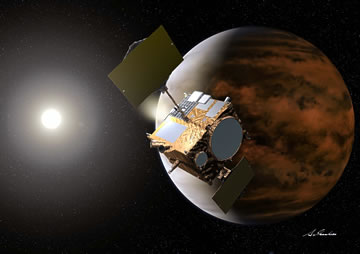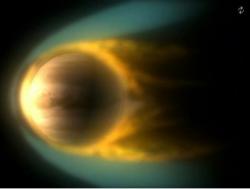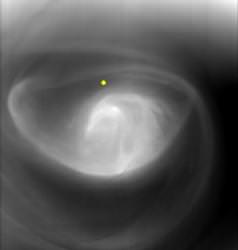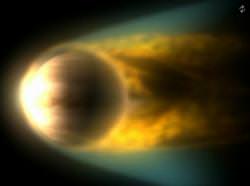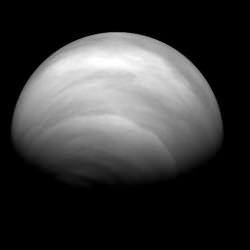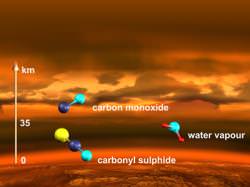Venus is known as the Earth’s twin, but a better name might be Earth’s “evil twin” planet. Although Venus has a similar size and mass to Earth, it has a dramatically different surface and atmosphere. And one of the biggest differences is that fact that Earth has plate tectonics, and Venus doesn’t. New research indicates that prolonged atmospheric heat might be able to shut down plate tectonics, and cause our planet’s crust to be locked in place. Don’t worry, this isn’t something we’ll have to worry about for a few hundred million years.
This research was done by scientists from the US, Canada and Australia, and published in this week’s edition of the journal Earth and Planetary Science Letters. According to the researchers, large amounts of volcanic activity or increases in the Sun’s luminosity could reach a tipping point, where the system of plate tectonics just shuts down.
Don’t worry, this isn’t an article about the dangers of global warming. The kind of temperatures we’re talking about here are beyond anything scientists are expecting from human-induced climate change.
These findings help explain why Venus might have evolved differently from Earth. Although the planet has a very similar size and geological makeup, the atmosphere on Venus is rich in carbon dioxide, and almost 100 times more dense. It acts like a blanket, trapping heat from the Sun, and raising temperatures to more than 450 °C.
Plate tectonics are very important for keeping our mild temperatures here on Earth. The carbon dioxide is pulled out of the air and trapped on the floor of the ocean. This carbon gets returned to the interior of the Earth when a free-floating sections of crust called tectonic plates slide underneath one another.
Scientists think that the Earth’s plate tectonics are stable and self-correcting, assuming excess heat from inside the Earth can escape through the crust. The flowing mantle keeps the tectonic plates moving.
But if the surface of the Earth is heated up for a long period of time, it could make the flowing mantle more viscous, so it stops flowing. This would shut down plate tectonics on Earth.
“We found the Earth’s plate tectonics could become unstable if the surface temperature rose by 38 °C (100 °F) or more for a few million years,” said lead author Adrian Lenardic, associate professor of Earth science at Rice University. “The time period and the rise in temperatures, while drastic for humans, are not unreasonable on a geologic scale, particularly compared to what scientists previously thought would be required to affect a planet’s geodynamics.”
One interesting discovery is that the rise in temperature doesn’t need to boil away the Earth’s oceans. The tectonic shut down could happen, even though there’s still liquid water on the surface of Earth.
Original Source: Rice University News Release


